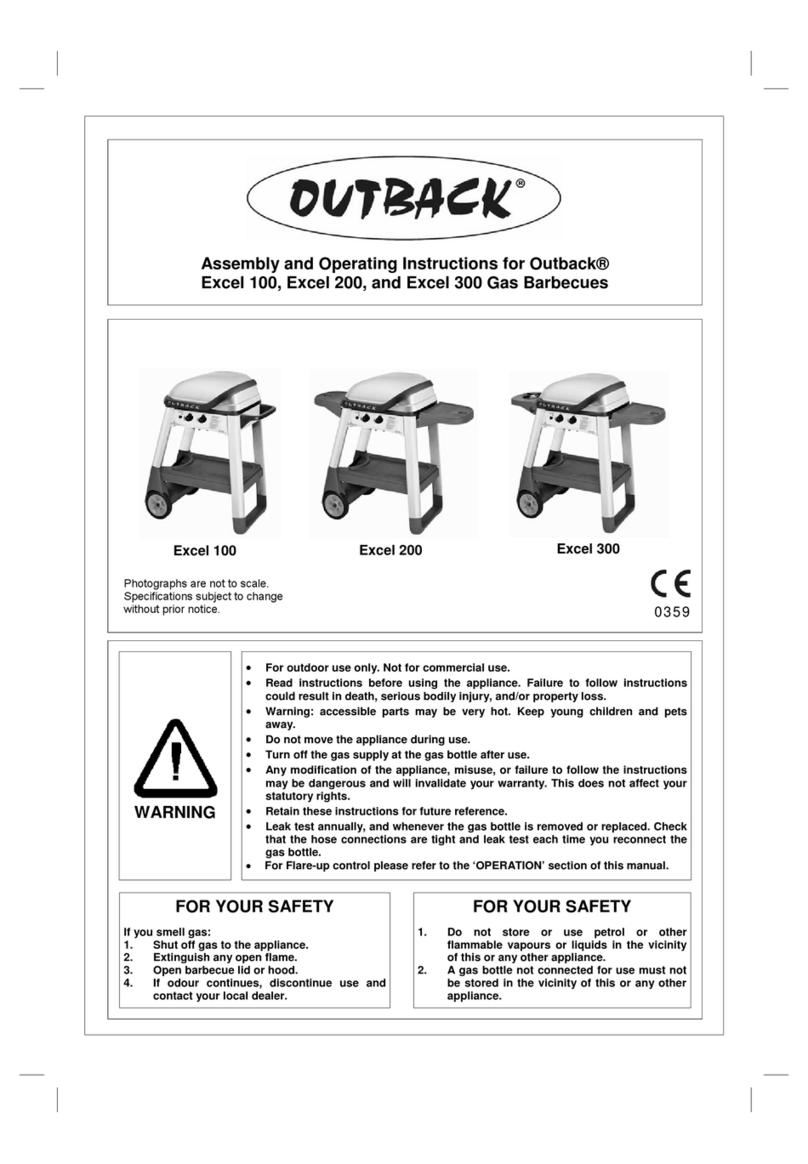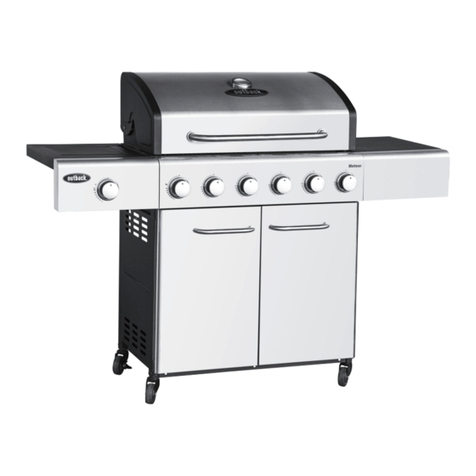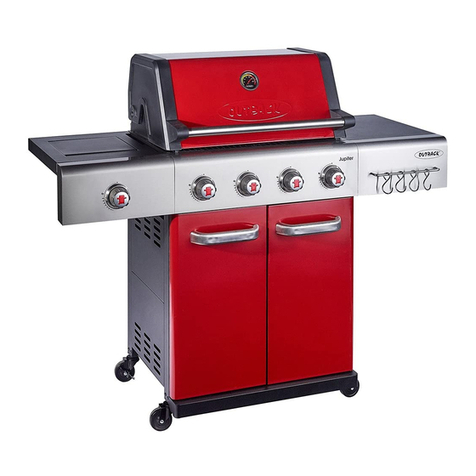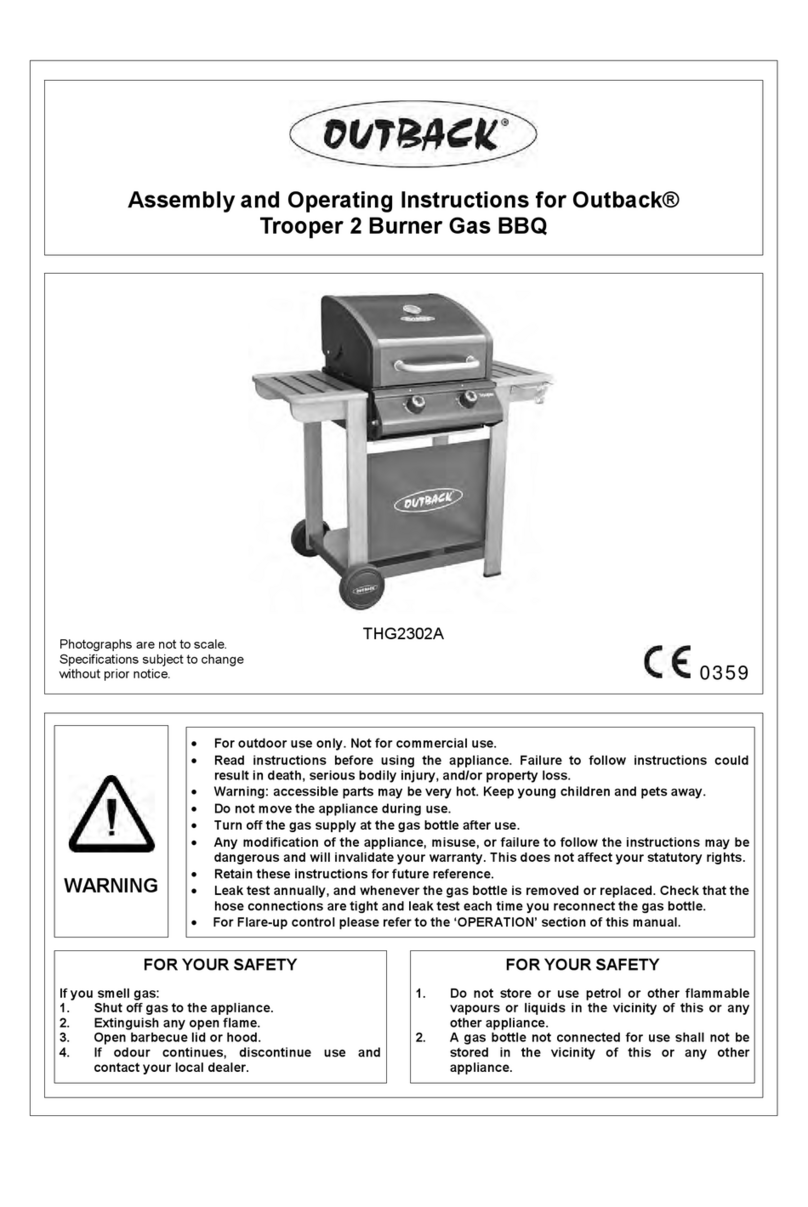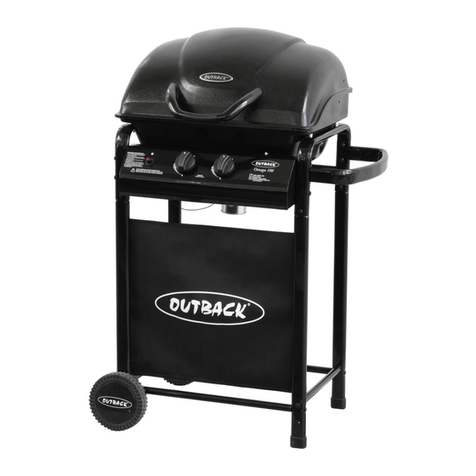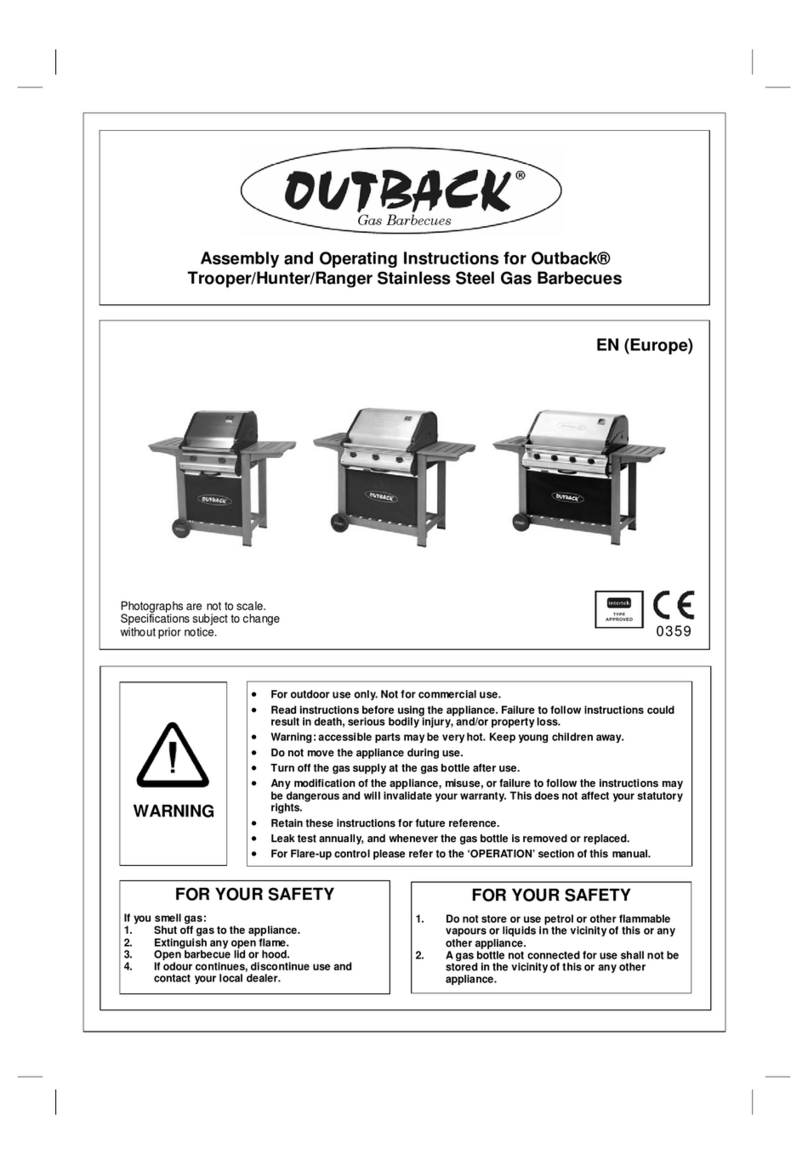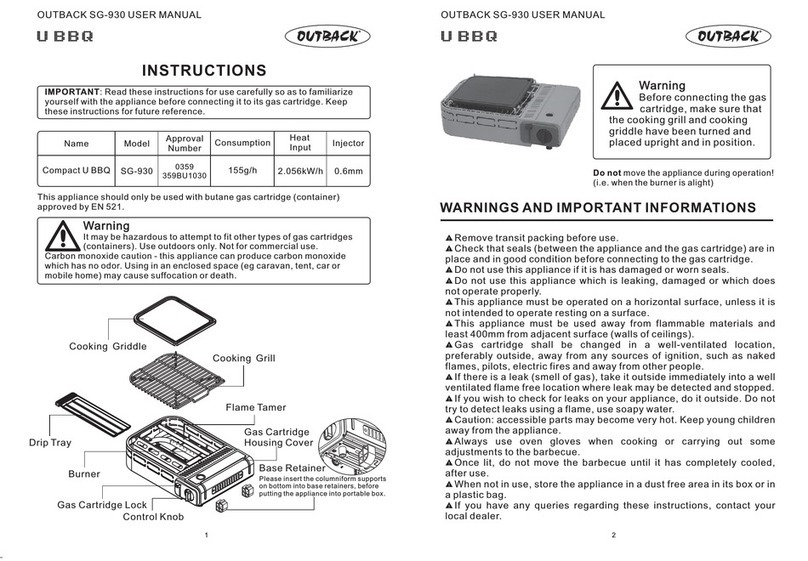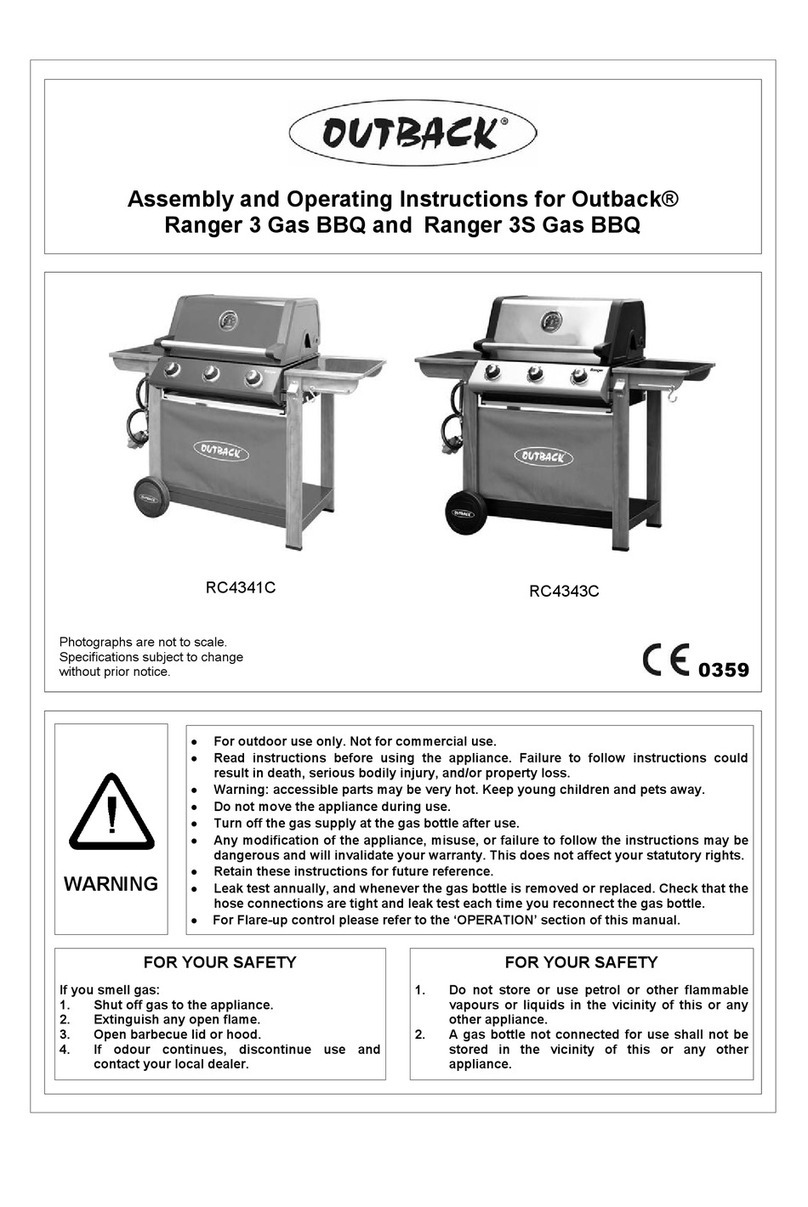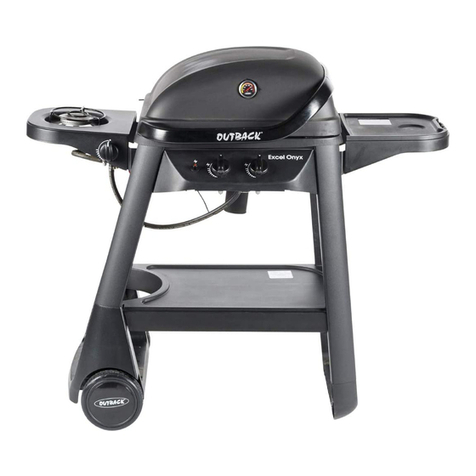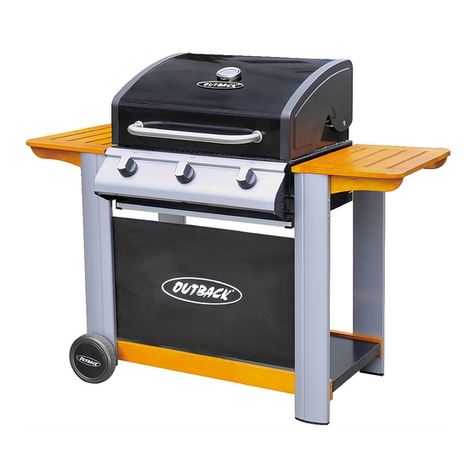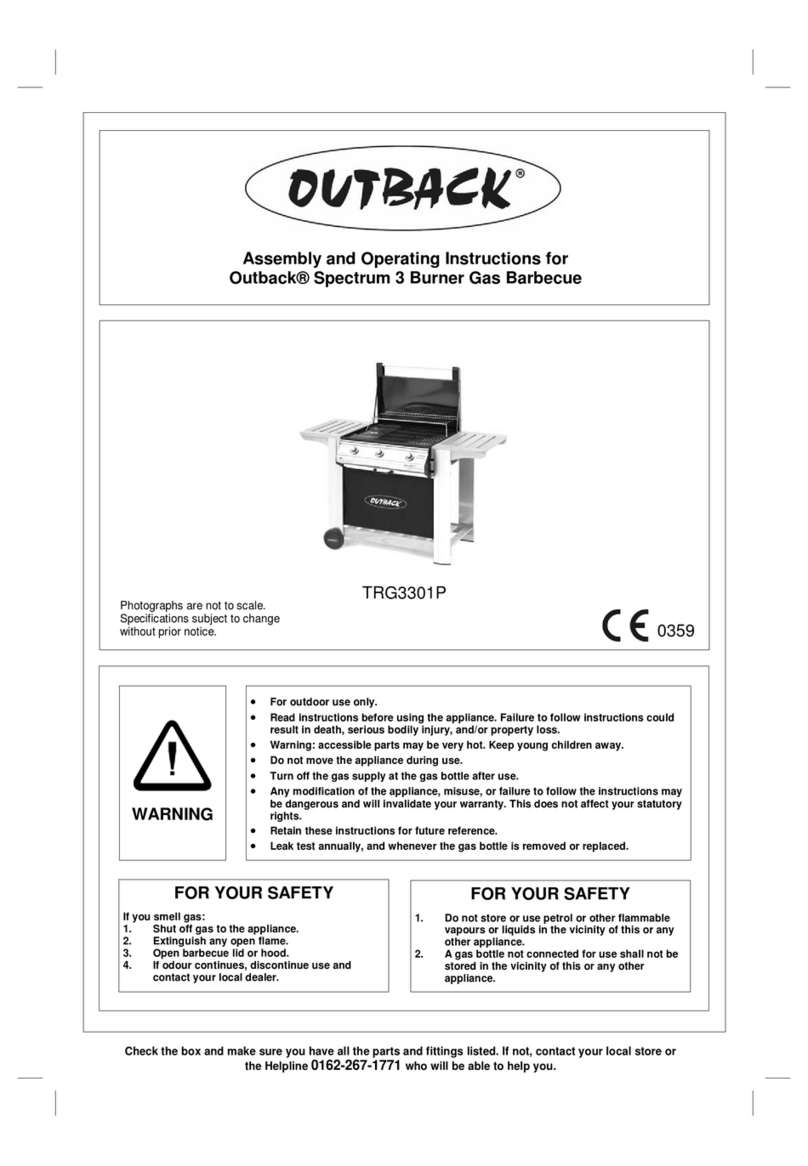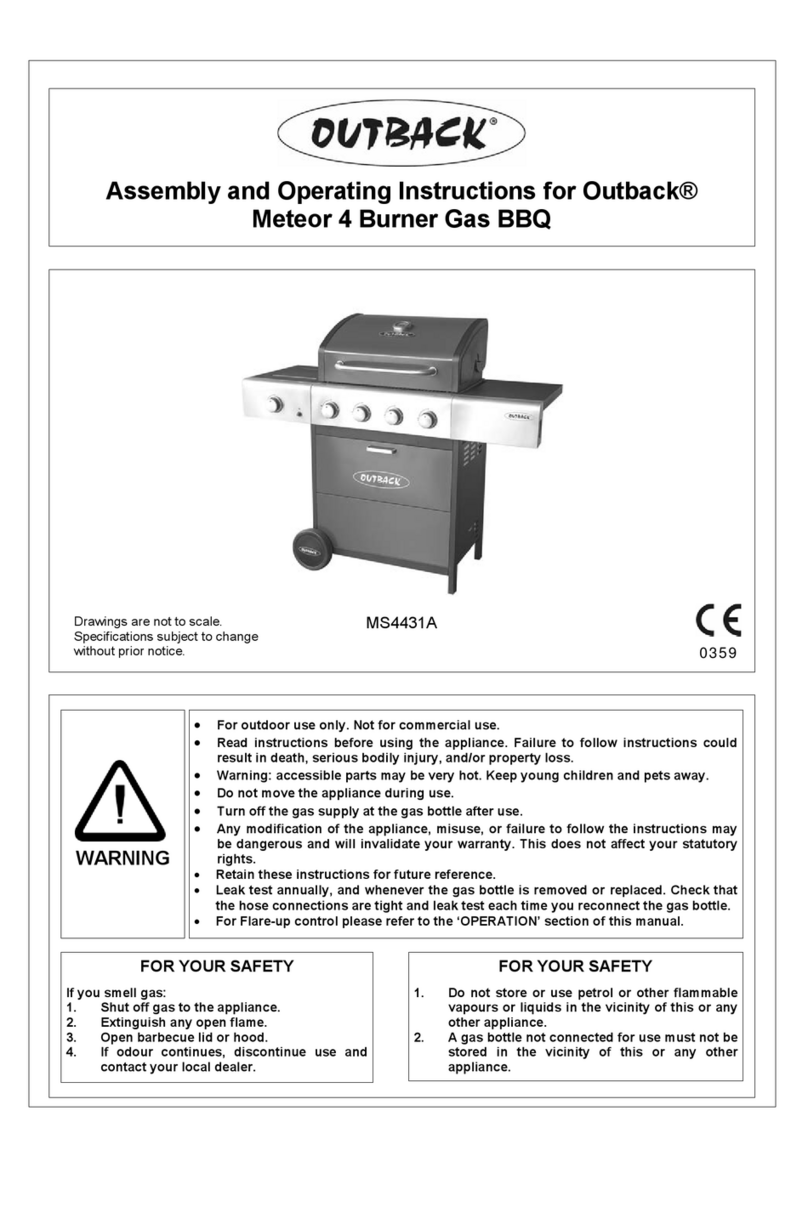10
E. Important Information
Please read and understand these
instructions before assembly and use.
• Retain these instructions for future
reference.
• For outdoor use only – do not use indoors!
• Do not move the barbecue while lit.
• Ensure the ash pan is in place before use.
• Never remove the ash pan whilst the
barbecue is in use. Wait until the barbecue
is completely cooled before removing it.
• Modification of the barbecue may be
dangerous, is not permitted, and will nullify
any warranty.
• Use this barbecue only on a stable, flat
plane.
• Do not use within 1m of any flammable
structure or under any combustible surface.
• Caution: CAUTION! Do not use spirit or
petrol for lighting or re-lighting! Use only
firelighters complying to EN1860-3.
• Do not store flammable materials near this
barbecue.
• Do not use aerosols near this barbecue.
• WARNING! This barbecue becomes very
hot. Do not move it during operation.
• WARNING! Keep children and pets away.
• Failure to follow the instructions in this
manual could result in serious injury or
property damage.
• If you have any queries regarding these
instructions, contact your local dealer.
F. Installation
F1. Selecting a Location
This barbecue is for outdoor use only and
should be placed in a well-ventilated area on a
safe and even surface. Take care to ensure that
it is not placed UNDER any combustible
surface. The sides of the barbecue should
NEVER be closer than 1 metre from any
combustible surface. Keep this barbecue away
from any flammable materials!
G. Operation
G1. Warning
• Before proceeding, make certain that you
understand the IMPORTANT
INFORMATION section of this manual.
• This barbecue is designed for charcoal use
only. We do not recommend the use of lump
wood charcoal or lump wood based charcoal
products as they burn too quickly in this
design. We recommend using charcoal
briquettes. Use only enough briquettes to
cover the charcoal grill in a single layer. Do
not overload the charcoal grill. The
maximum amount of briquettes to be used at
any one time is 0.75kg.
G2. Lining the Ash Pan
Line the ash pan with aluminium foil. This will
protect the pan, help better reflect heat, and
make cleaning easier when barbecuing is
finished.
G3. Starting the Charcoal
• Caution: CAUTION! Do not use spirit or
petrol for lighting or re-lighting! Use only
firelighters complying to EN1860-3.
• Block Type Starters – Form charcoal in a
pyramid around it. Light the starter block.
When charcoal is well lit, spread around the
charcoal grid and add more as necessary.
• Liquid Starters – Place charcoal in a shallow
tin. Pour liquid charcoal starter onto charcoal
and wait 5-10 minutes so that starter is
allowed to penetrate into the charcoal. Then
place charcoal on grid in a pyramid
formation. Light charcoal. Allow time for
charcoal to become well lit. Spread charcoal
in a uniform layer, so that each lump is just
touching. When the charcoal is ashed over
(grey coating of ash over each lump) you
are ready to begin cooking.
• Do not begin cooking until charcoal has an
ashed-over coat.
• Do not attempt to cook whilst charcoal is
flaming.
G4. Preparation Before Cooking (Before
First Use)
To help prevent food from sticking to the grill,
please use a long handled brush to apply a light
coat of cooking or vegetable oil before each
barbecuing session.
G5. Using the Vents to Control Cooking
The vents can be used to control the burning of
the charcoal. With the vents open, more air will
circulate and the charcoal will burn faster than
with the vents closed. Caution—the vent handle
may become very hot. Oven gloves should be
used when carrying out adjustments. Do not
close the hood whilst the charcoal is still
flaming. Wait until it has ashed over.
G6. Flare-Up Control
Flare-ups occur when meat is barbecued and


